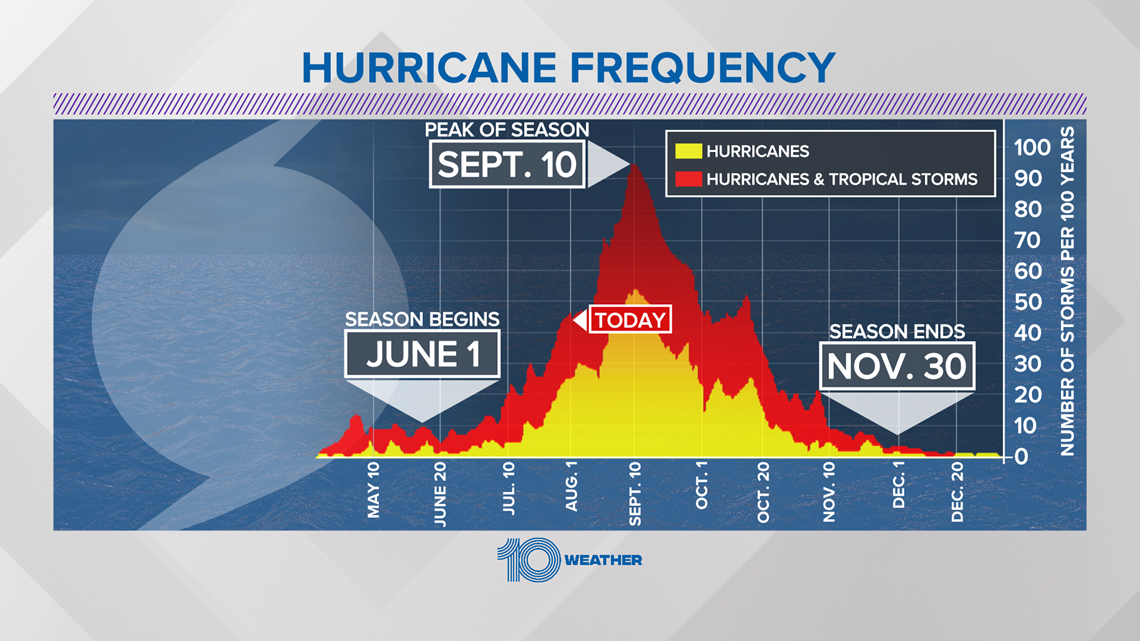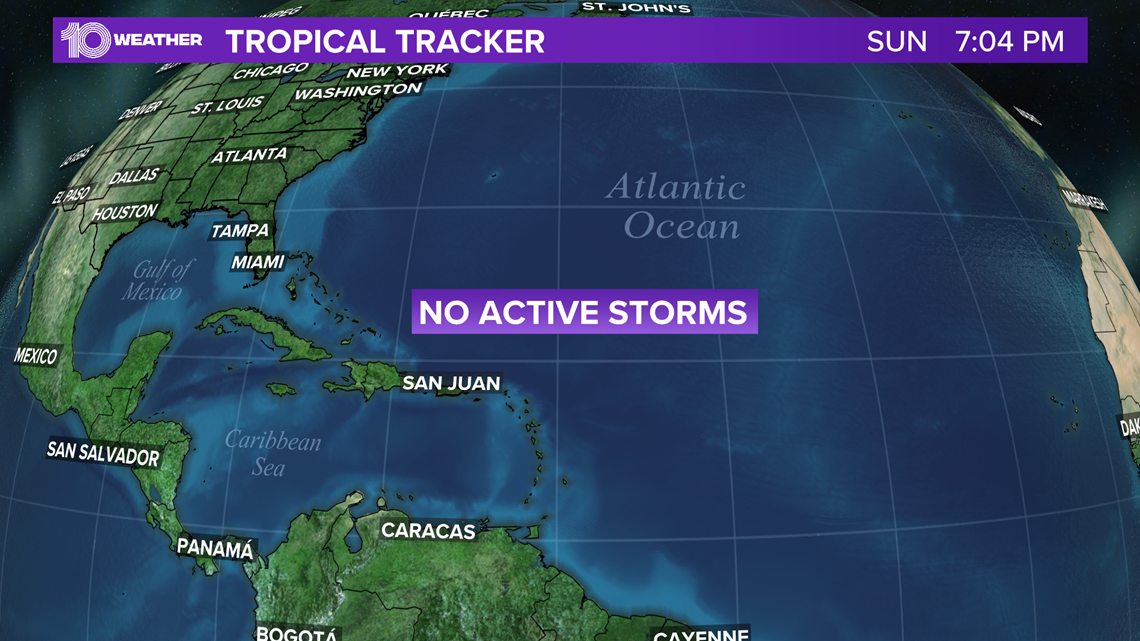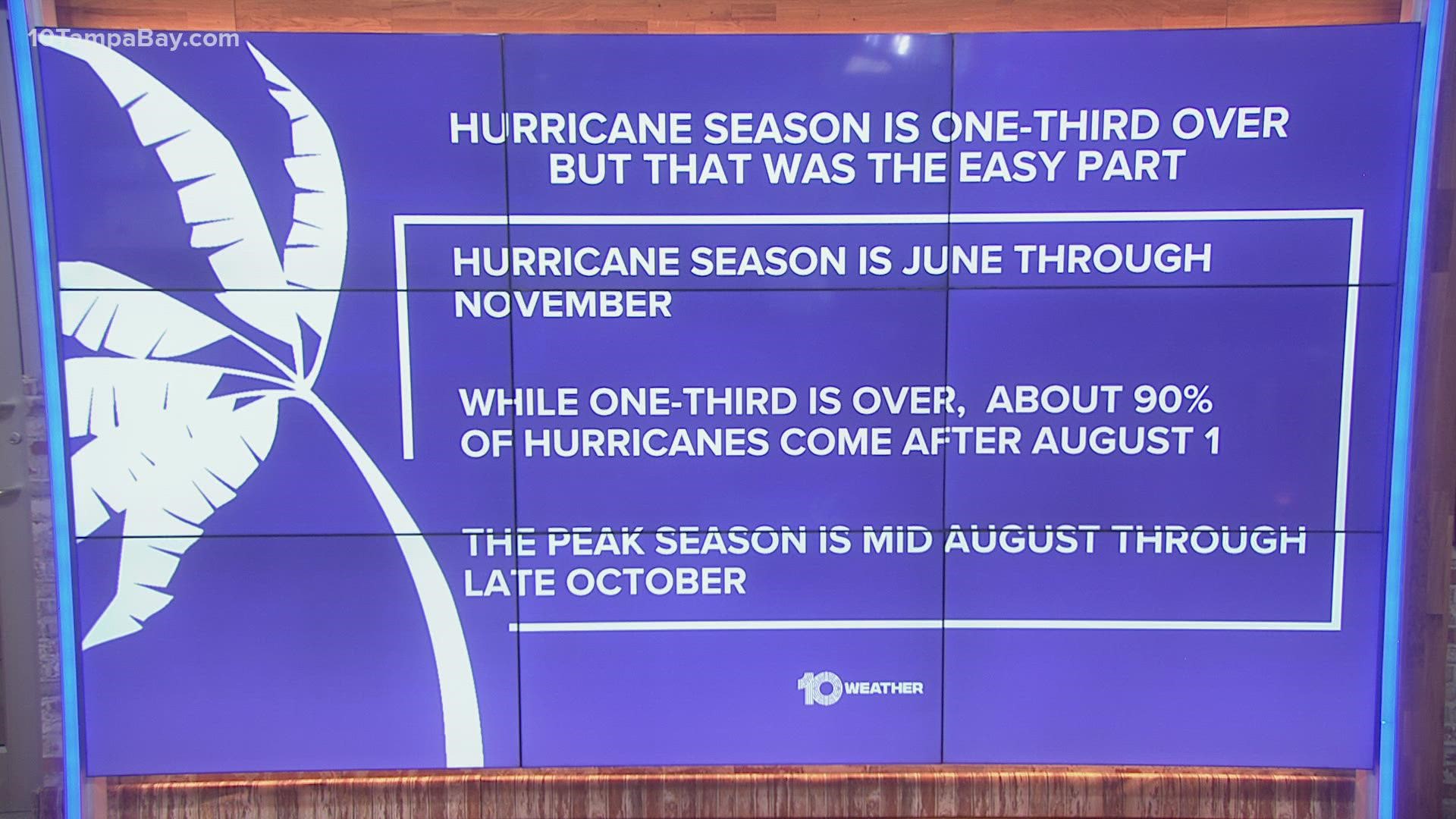FLORIDA, USA — While it's great that one-third of the hurricane season is behind us, the first two months of it are the easy part.
Hurricane season runs from June 1 through Nov. 30. Most hurricanes occur after August 1, so the peak of the season is yet to come.
About 90 percent of hurricanes occur from August through October each year.


The statistical peak of hurricane season occurs on September 10.
The tropics are currently quiet and no systems are being monitored by the National Hurricane Center.
At the beginning of July, top hurricane forecasters at Colorado State University said to expect even more tropical storms and hurricanes than originally forecast for the 2021 Atlantic Hurricane Season.
CSU is now predicting 20 named storms, with nine of them becoming hurricanes. Four of those storms are expected to become major hurricanes, which is category three or above.
The original 2021 hurricane forecast by CSU in June called for 17 named storms, eight hurricanes and four major hurricanes.
The amount of expected named storms does include the five named storms that have already developed this season, which are tropical storms Ana, Bill, Claudette, Danny and Elsa. Elsa was the season’s first hurricane moving south-to-north just offshore by Tampa Bay in early July.
The next updated forecast from CSU, as well as NOAA, will come in early August just prior to the peak of hurricane season.
Colorado State University has produced the longest-running seasonal Atlantic hurricane forecast, which is in its 35th year.
Be sure to have your hurricane plan in place. For more on hurricane plan preparation, visit 10TampaBay.com/tropics.



